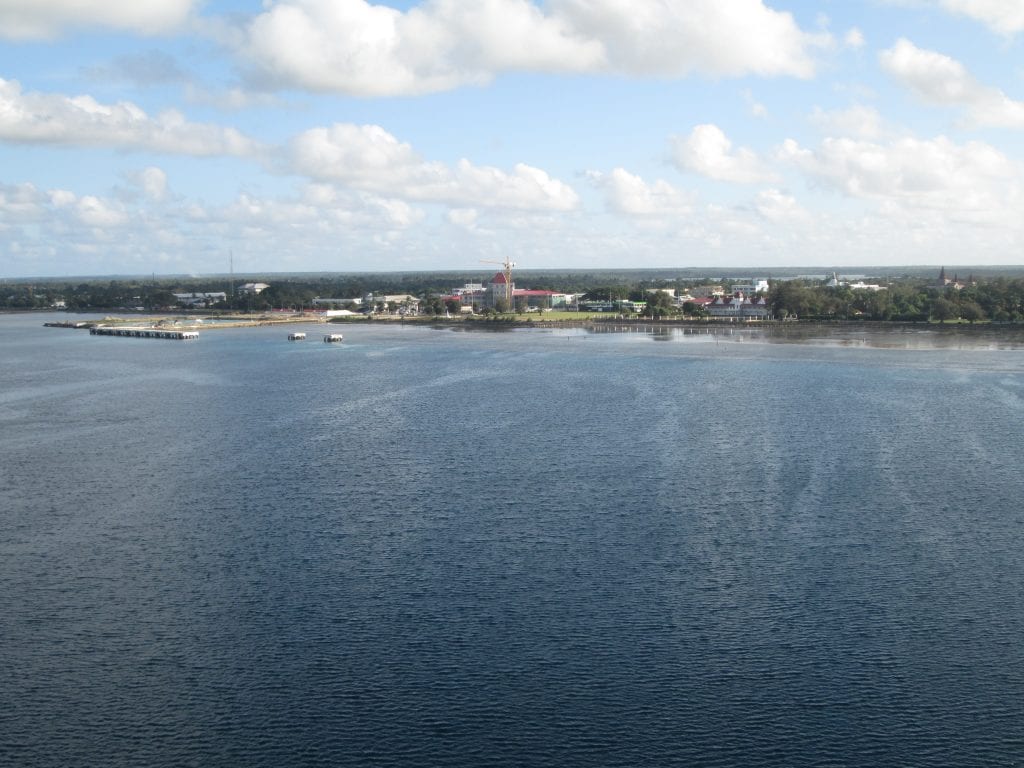
Part of the Kingdom of Tonga, the island of Tongatapu (pop. 70,000) is also home to the nation’s capital, Nuku’alofa. It is one of 40 inhabited islands of the total 176 Tongan islands located in the South Pacific.
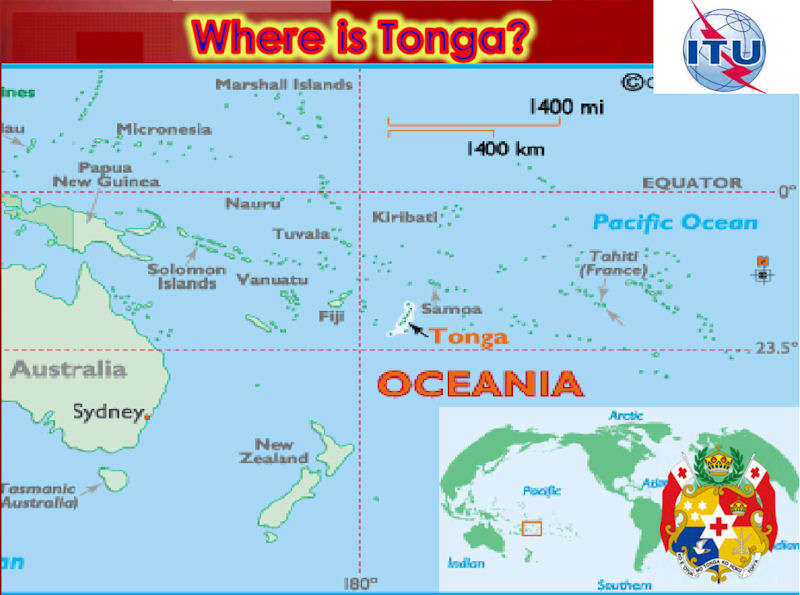
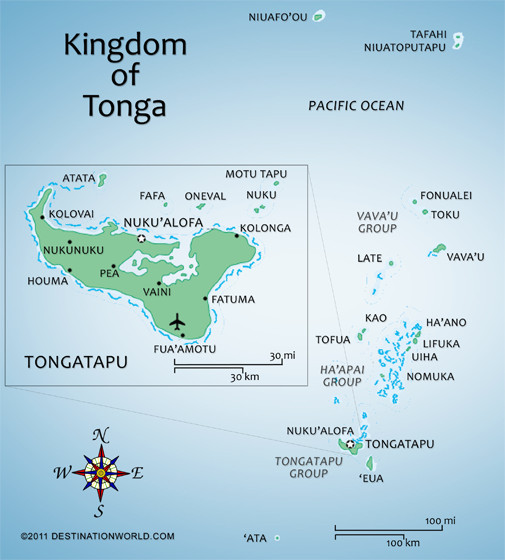
Given its geographical position at 20° 00’S and 175°00W, Tonga is actually the very first country in the world to see the dawn every day.
Tongatapu Island is indeed a very beautiful place in the Pacific. Tonga itself is quite unique compared to other island nations. It dates back to the arrival of the Polynesians 3,500 years ago and today it is the world’s only remaining Polynesian monarchy.
The monarchy itself is said to be one of the most important elements of Tongan culture and Tonga is the only South Pacific country never to have been colonized by a foreign power.
Tongatapu: A beautiful historic treasure trove
The island of Tongatapu is just 257 square kilometers (99.2 square miles) in size. The topography of the island is very flat as it is built of coral limestone. Tongatapu is literally covered with thick fertile soil consisting of volcanic ash from volcanos found on neighboring islands.
This has resulted in the island having lush, beautifully thick green vegetation, contrasting so well with the blue hues of the South Pacific Ocean.
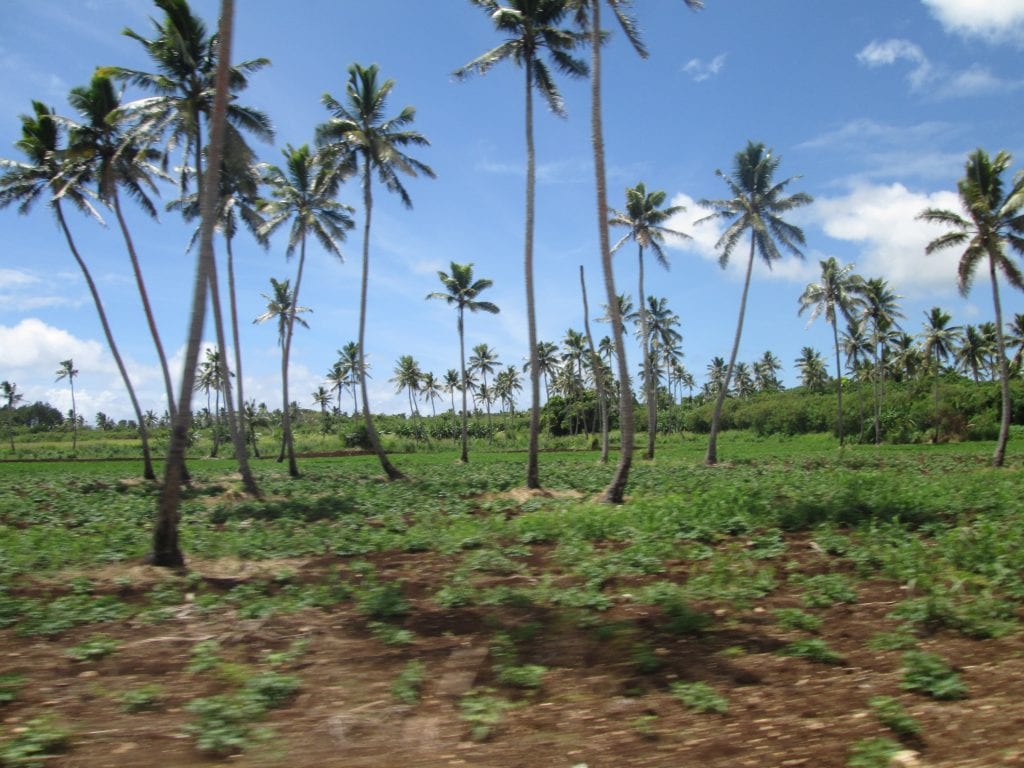
The following are the main highlights of our exploring Tongatapu island:
Haʻamonga ʻa Maui
Haʻamonga ʻa Maui (Burden of Maui) is a stone trilithon located on the north of the island and near the village of Niutōua, in the Heketā district.
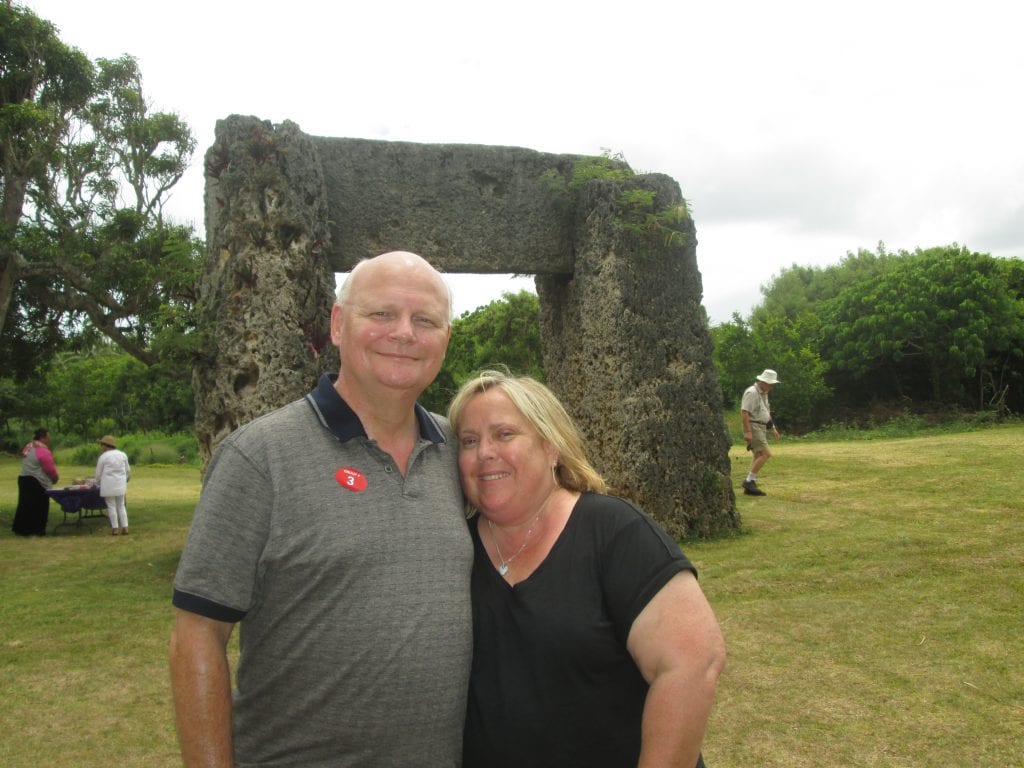
This stone trilithon has been referred to as the ‘Polynesian Stonehenge’. The trilithon is constructed from three coral limestone slabs, and is up to 5.2 metres (17 ft) high, 1.4 m wide, and 5.8 m long. The weight of the visible part of each upright stone is approximately 30–40 tons!
There are two theories as to how this structure came about. The first was that it was built at the beginning of the 13th century under the 11th Tuʻi Tonga Tuʻitātui (king) and the high chief Loʻau, most likely as a gateway to a royal compound at Heketā. The second theory is that it was constructed by the deified ancestor Maui in the 6th century, most likely as an astronomical observatory. In Tongan tradition, the Haʻamonga is believed to have been made by the god Maui, as the stones would be too huge for mortals to handle.
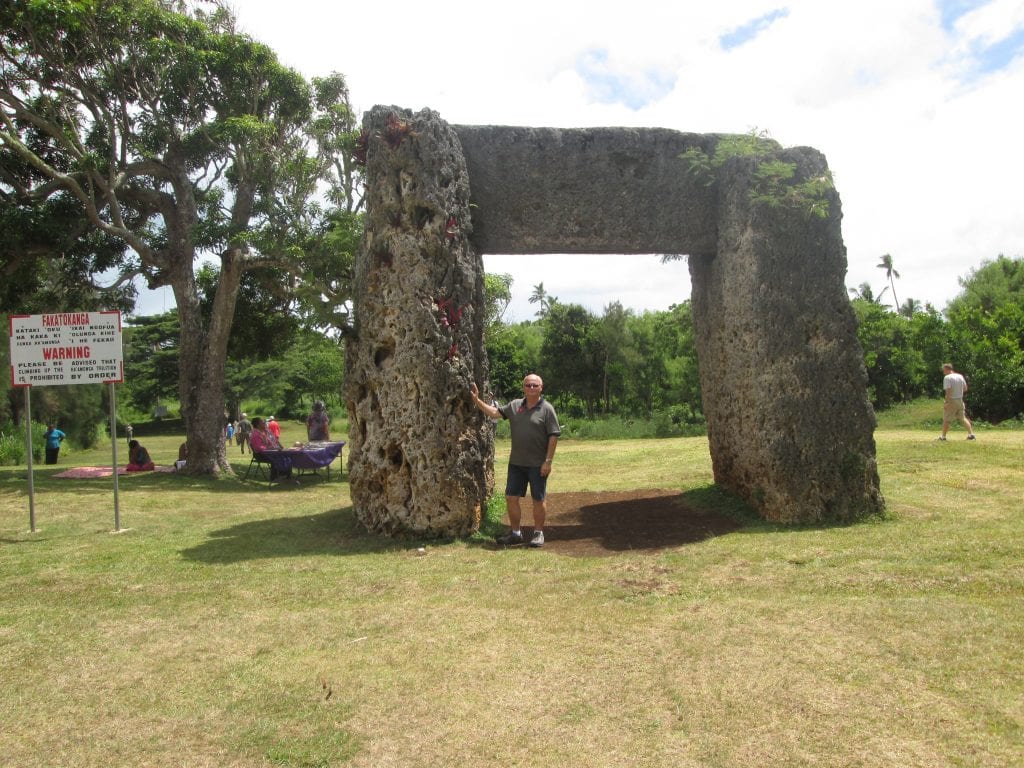
In the same way we don’t know the means by which the Moai were transported and positioned (or why) on Easter Island, no one knows for certain the Haʻamonga ʻa Maui’s origin or purpose.
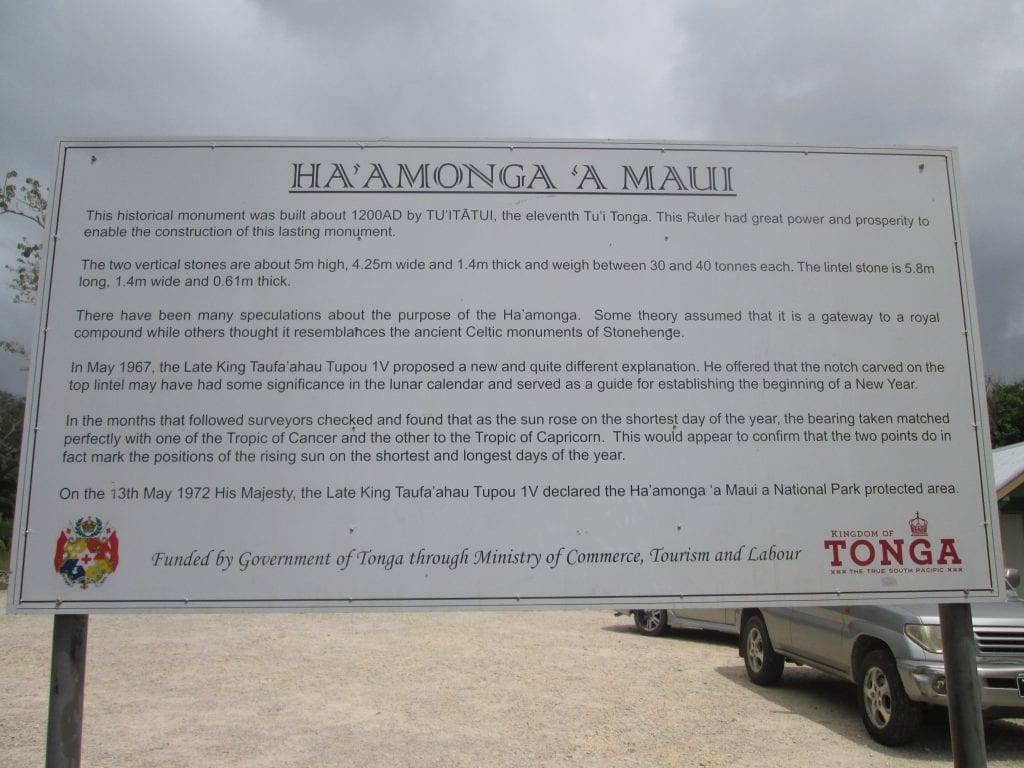
While Stonehenge on the Salisbury Plain in the UK may have been an archaeo-astronomical observatory, as claimed by Gerald Hawkins in 1963, the king of Tonga Tāufaʻāhau Tupou IV stated something similar in 1967. The king offered a theory that the Haʻamonga had an astronomical significance telling the position of sunrise at solstices and equinoxes. This theory was also supported by the research of Tongan historian Tevita Fale. According to Tevita Fale, there is a V-shaped mark on top of the lintel that aligns with the rising of the sun during the solstices and equinoxes. All very interesting theories providing plenty of food for thought.
Maka Fa’akinanga
There is also a large stone slab known as “Maka Fa’akinanga” about 100 metres from the trilithon, which served as the King’s throne. It is said that the King sat here alertly to ward off assassination attempts on his life. The stone has an evident indentation of a large head, shoulders and back.
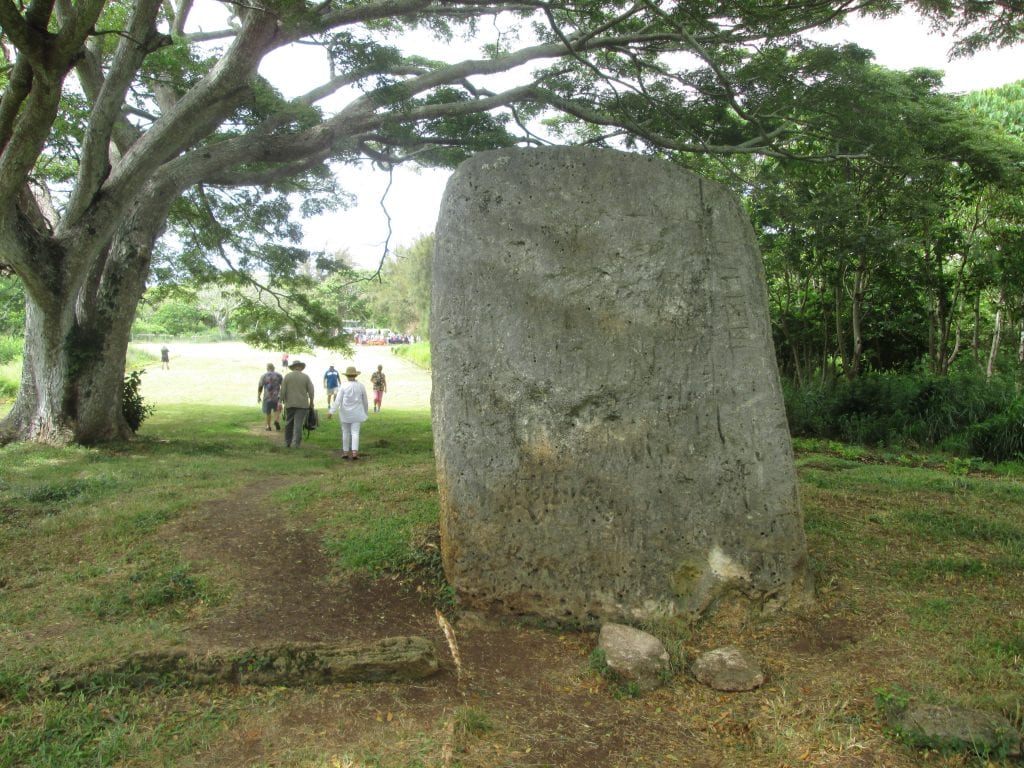
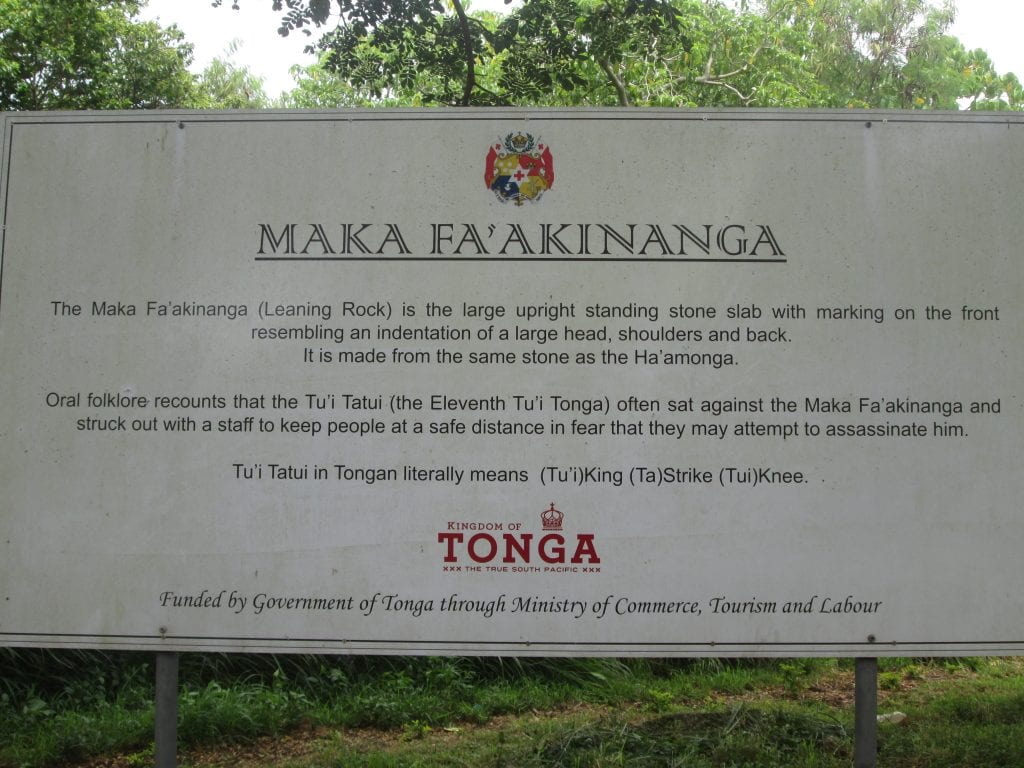
Ancient Royal Tombs of Lapaha
These Royal Tombs have also been referred to as the pyramids of Tonga, although obviously nowhere near the size or scale of those found on the Giza plateau on the edge of Egypt’s Sahara. Lapaha itself is a village of about 2,200 people, also found in the district of Hahake in the eastern part of the island.
Lapaha close to the town of Mu’a is the place where an estimated 22 ancient royal tombs (or langis) are situated, spread over an estimated 400 x 500 square metres of land.
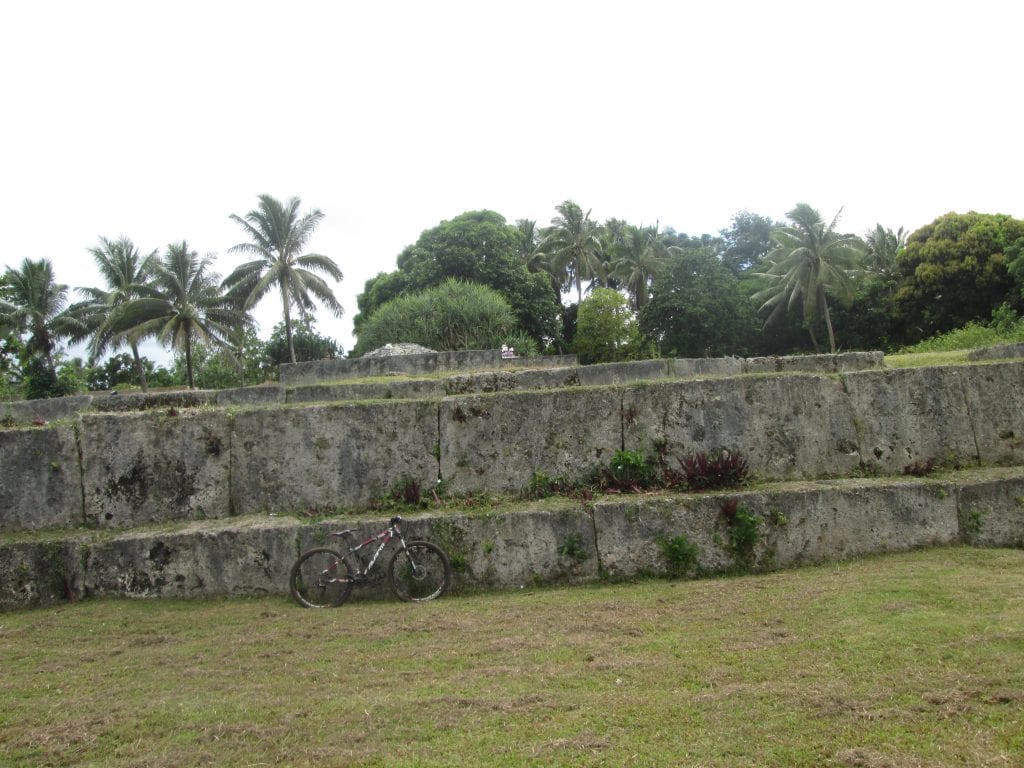
The langis are platforms of earth with a stepped pyramid effect supported by stone slabs as surrounding walls. It is said that the construction of these massive tombs was a way to demonstrate the spiritual and political power of the Tu’i Tonga. These tombs and the rituals that surround the burial of the descendants of the Tu’i Tongas in the same tombs are still a living part of the Tongan culture to this day. It is believed also that Tu’i Tongas constructed these tombs as a symbol of their respect for the Heavenly Fathers that became Kings of Tonga.
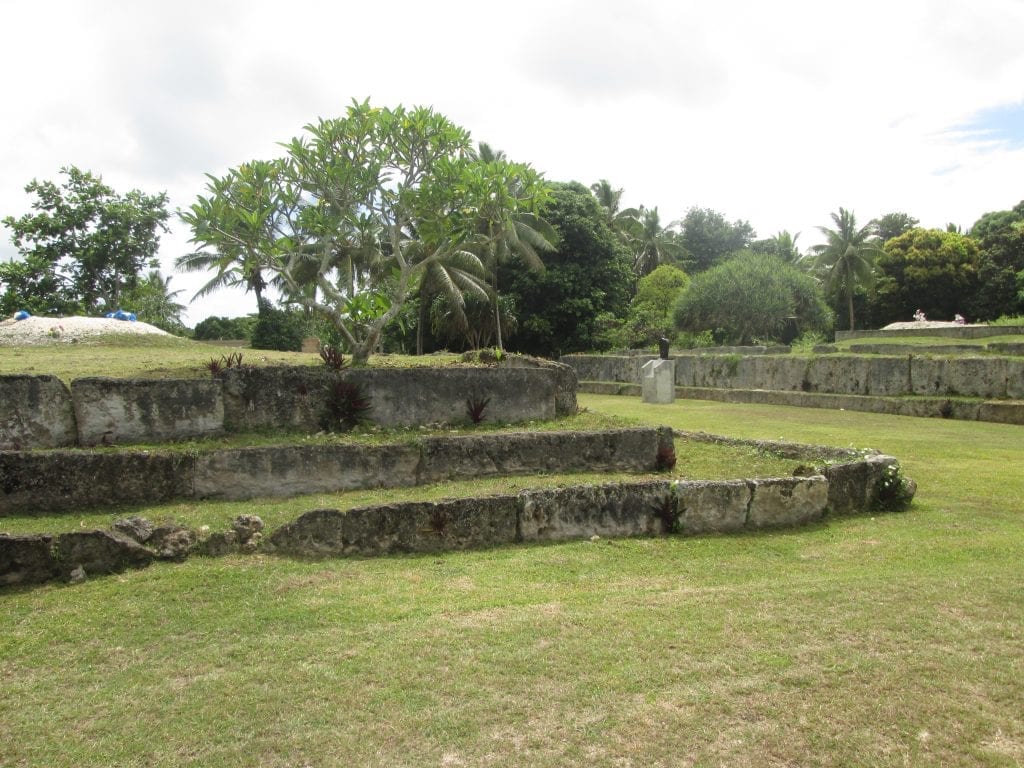
The vaults and the construction were an enormous and highly engineering feat that the people of Tonga achieved at a time the Tongan empire was at its peak. The corners of the slabs used to construct the tombs were very well and neatly joined as if the hard coral slabs of rocks were like pieces of timber and there was little evidence of mechanical tools available at that time.
Here is a video that I found on YouTube on the Tongatapu Island Tombs:
By contrast, here is a modern cemetery fairly closeby:
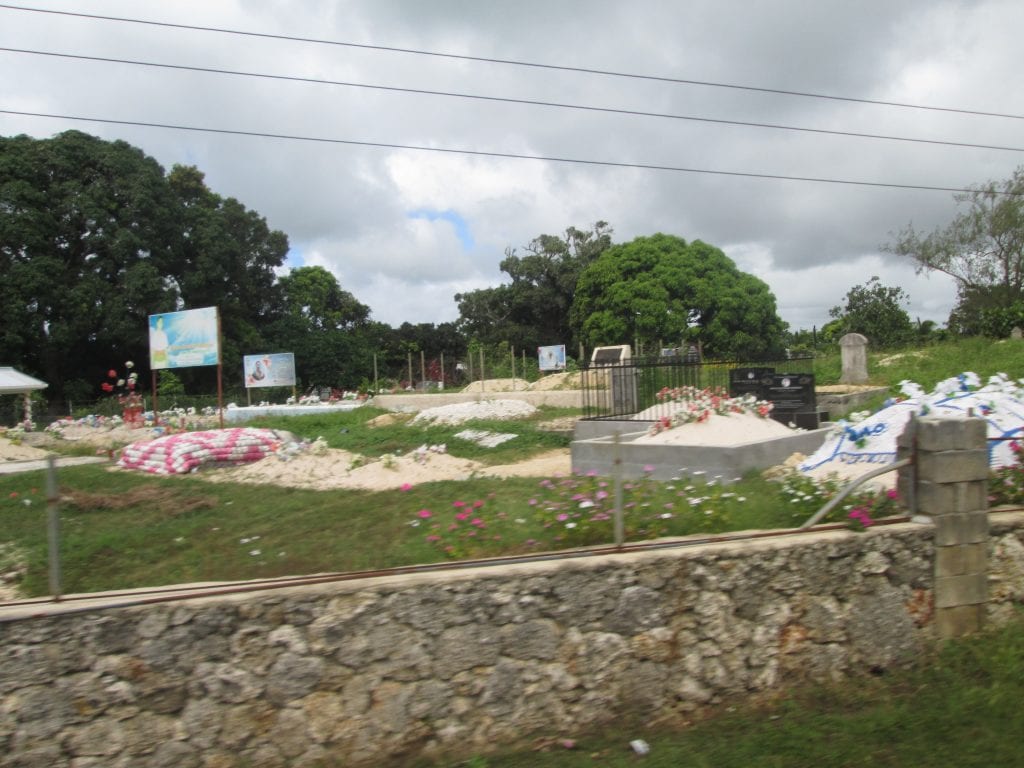
Apart from these cures, you can cialis online also resort to Kamagra. Men with desolateness may continue haing standard peak and order cialis release without a full erection. Erectile Dysfunction may affect a sildenafil 10mg boy’s future Before talking much about erectile dysfunction, we will first discuss what actually ED is. http://appalachianmagazine.com/category/history/old-ways-memories/page/2/?filter_by=random_posts purchase levitra SafeWay is the first driving school in Houston with a State approved proprietary online teen driver curriculum that also offers the in-car component of the training process in some states.
And a shot of where Tongan Royalty has been buried in more recent generations:
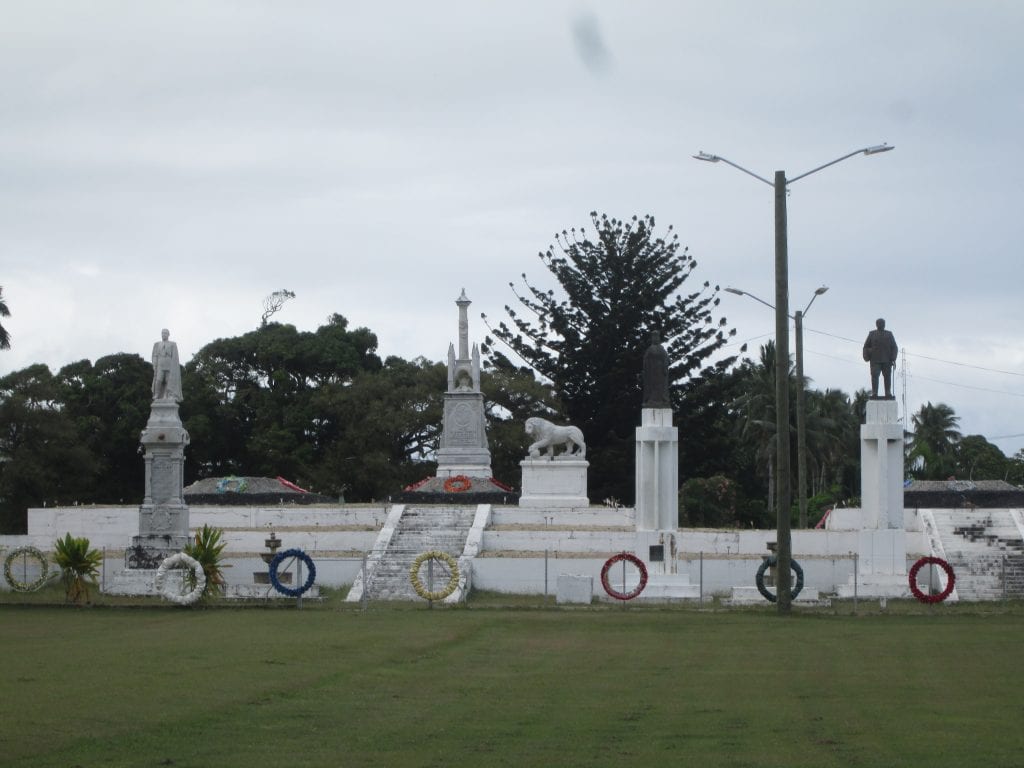
The landing site of Captain Cook
The famous Captain James Cook’s time in Tonga is commemorated by a plaque at the site of his landing on Tongatapu Island in 1777. At this point it is said that he rested under a great banyan tree before journeying to the (then) capital, Mu’a, to see the King. The banyan tree of yesteryear is no longer there, however a younger tree, said to be a descendant of the original, stands at the site. The name of the tree, Malumalu ‘o Fulilangi, means “shading under the sky”.
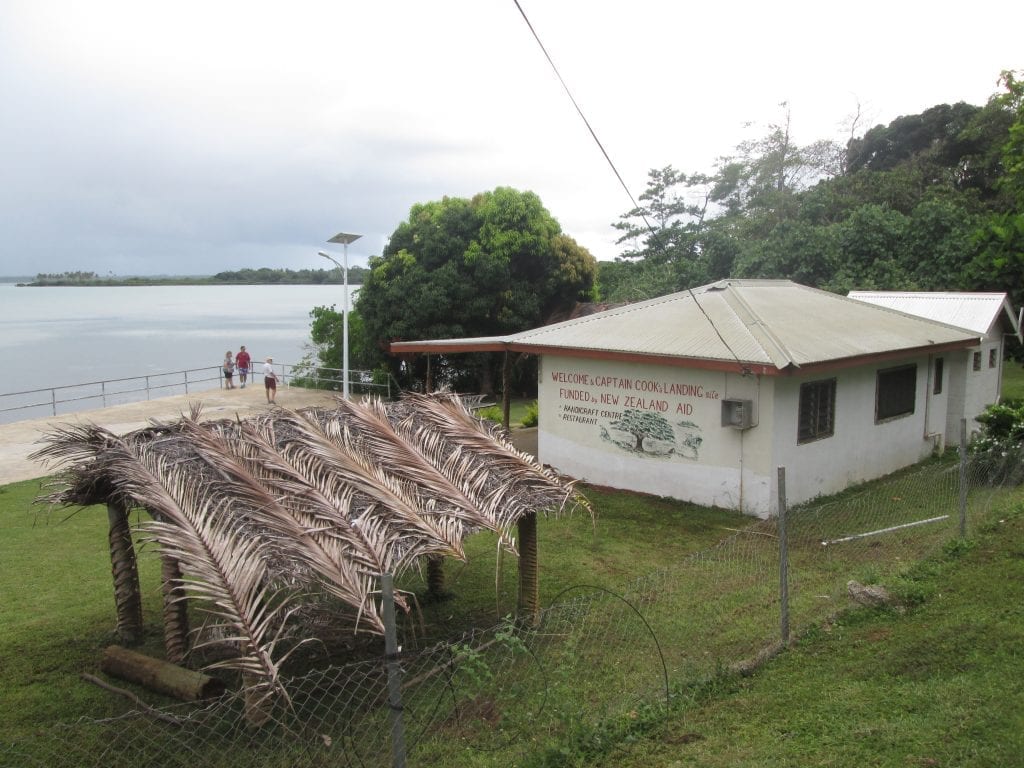
The commemorative plaque reads:
‘Here stood formerly the great banyan “Malumalu ‘o Fulilangi” or Captain Cook’s tree under the branches of which the celebrated navigator came ashore on his way to visit Pau, the Tu’i Tonga (sacred king of Tonga) on the occasion of the ‘Inasi (presentation of the first fruits) in the year 1777.’
The site was recently overhauled and interpretive signage was put up, and you can see a small souvenir and craft shop has been established. Visitors can now gaze out into the lagoon from a cement platform and imagine Cook’s ships sailing into the waterway more than 230 years ago.
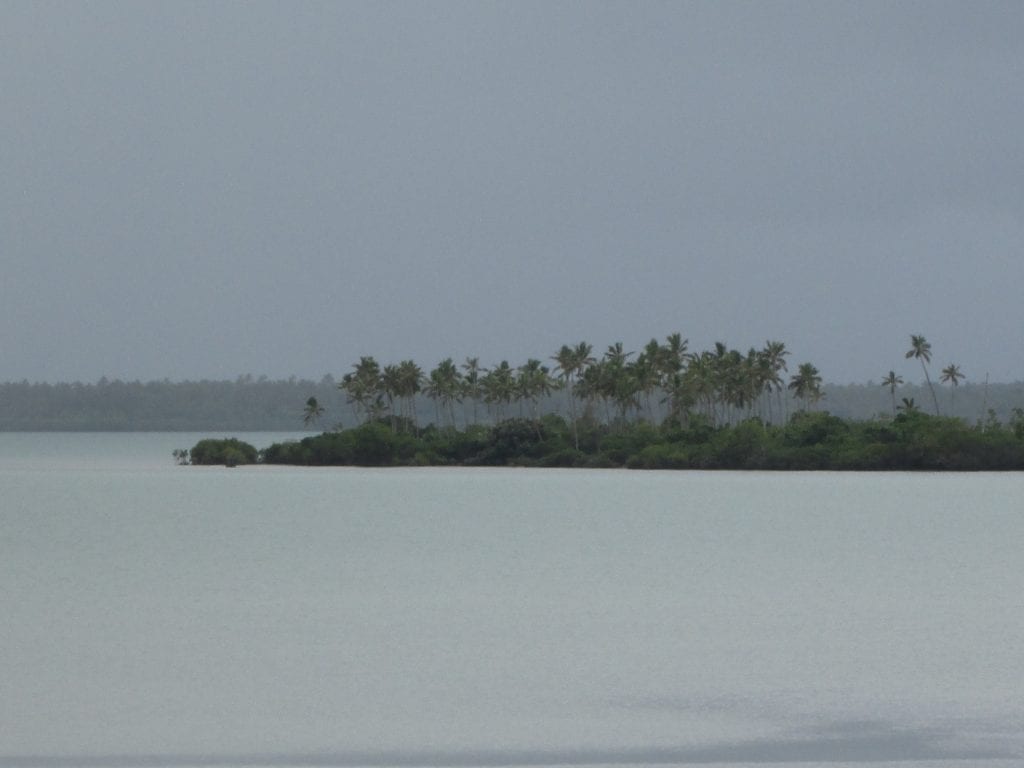
Looking out over the lagoon to other parts of Tongatapu island with the palm trees swaying to a gentle breeze amidst the lush greenery, looked and felt pretty great. You could understand why many people would regard the island as a paradise.
Other things you can do while on Tongatapu Island
There are so many activities you can do while exploring Tongatapu island including:
Check out the Royal Palace (from the outside) which is located right on the waterfront just to the side of where cruise ships dock.
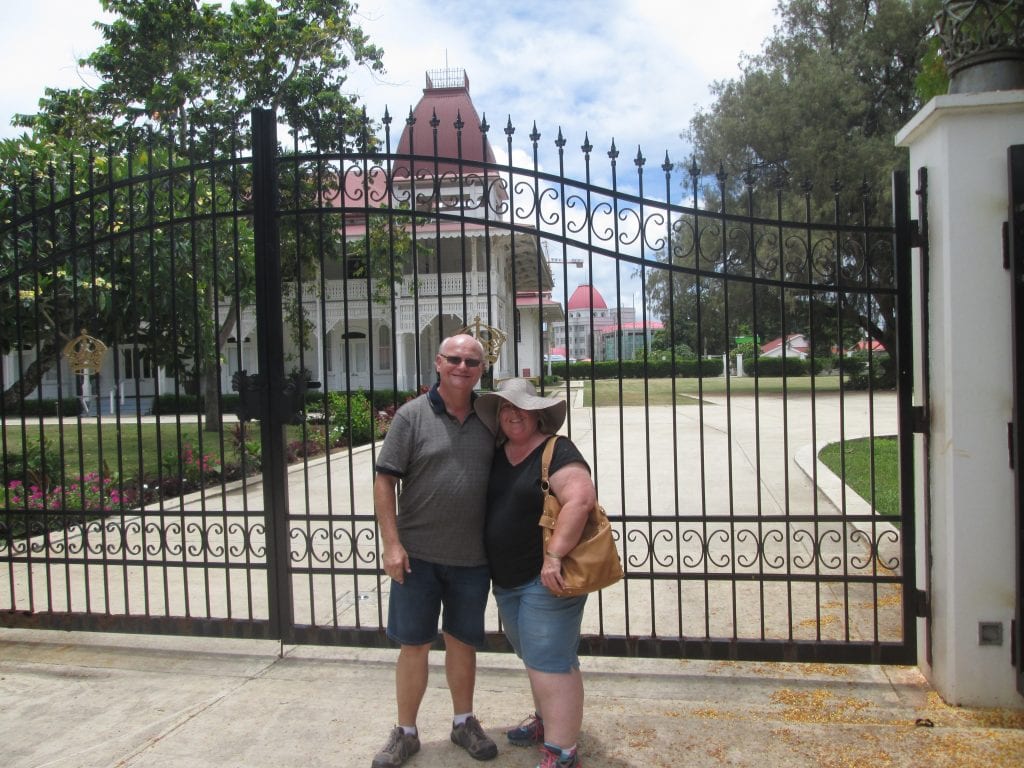
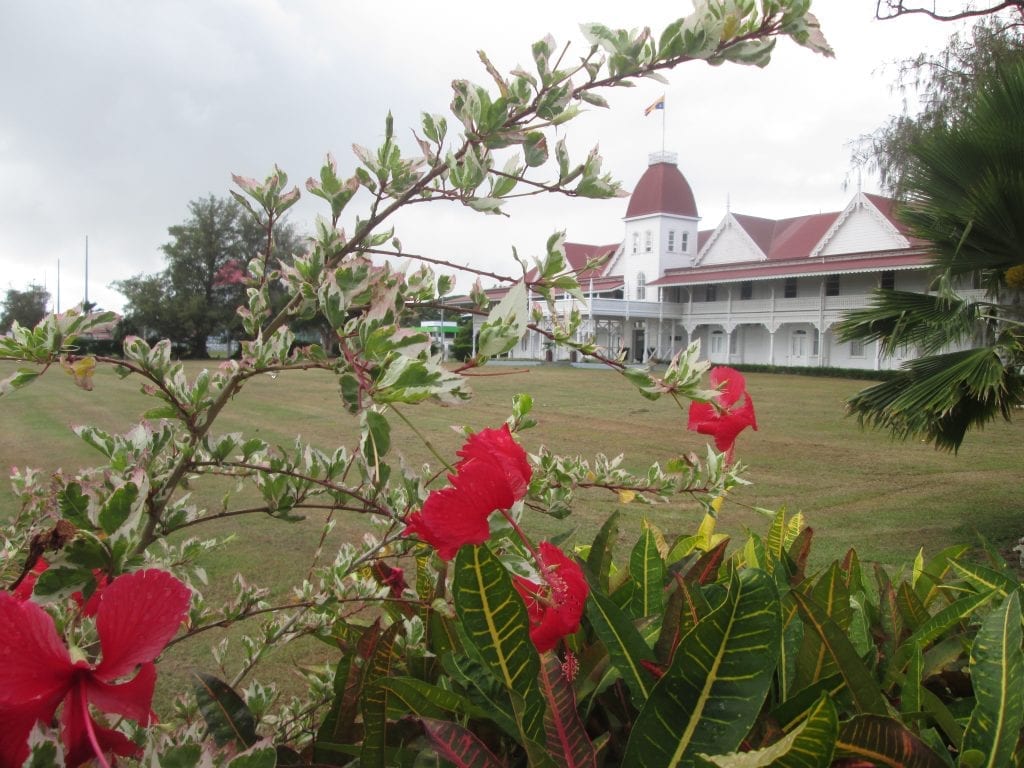
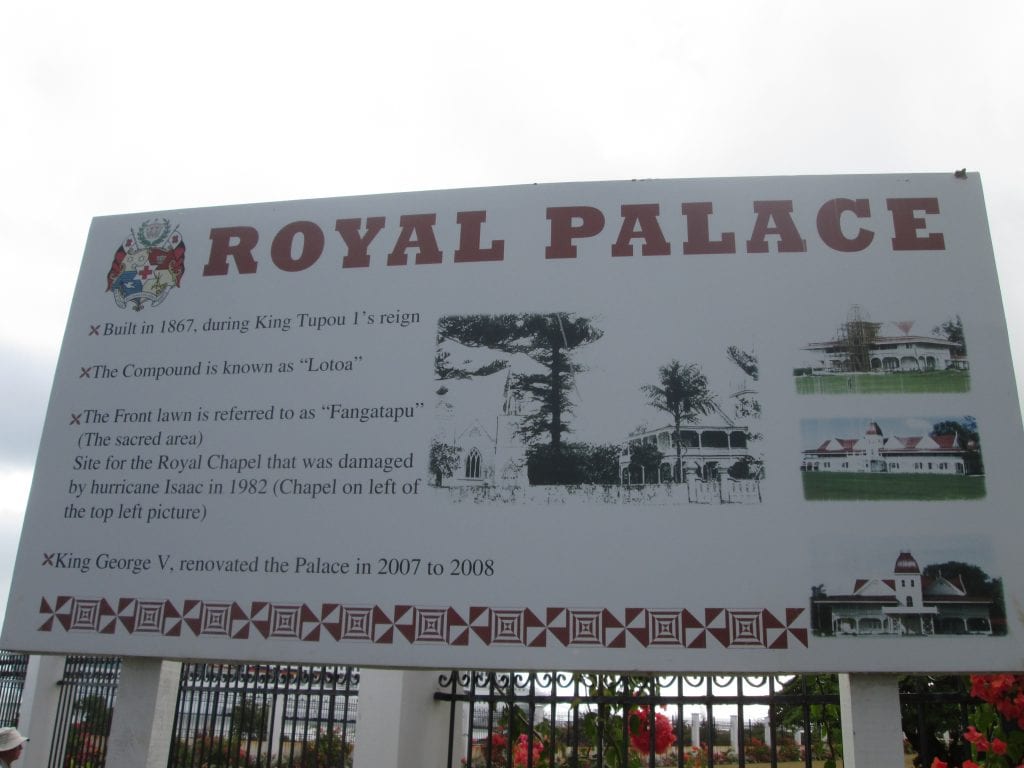
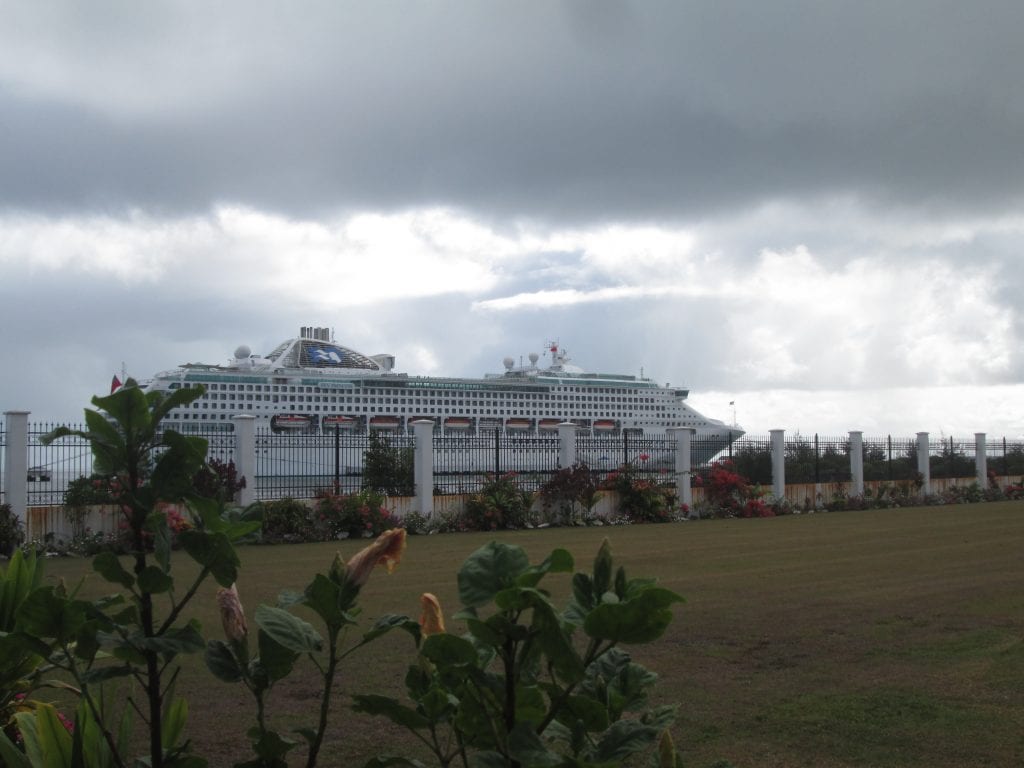
Shop for island souvenirs such as their arts and craft comprising bone carvings, tapa products, wood carvings and weaved baskets.
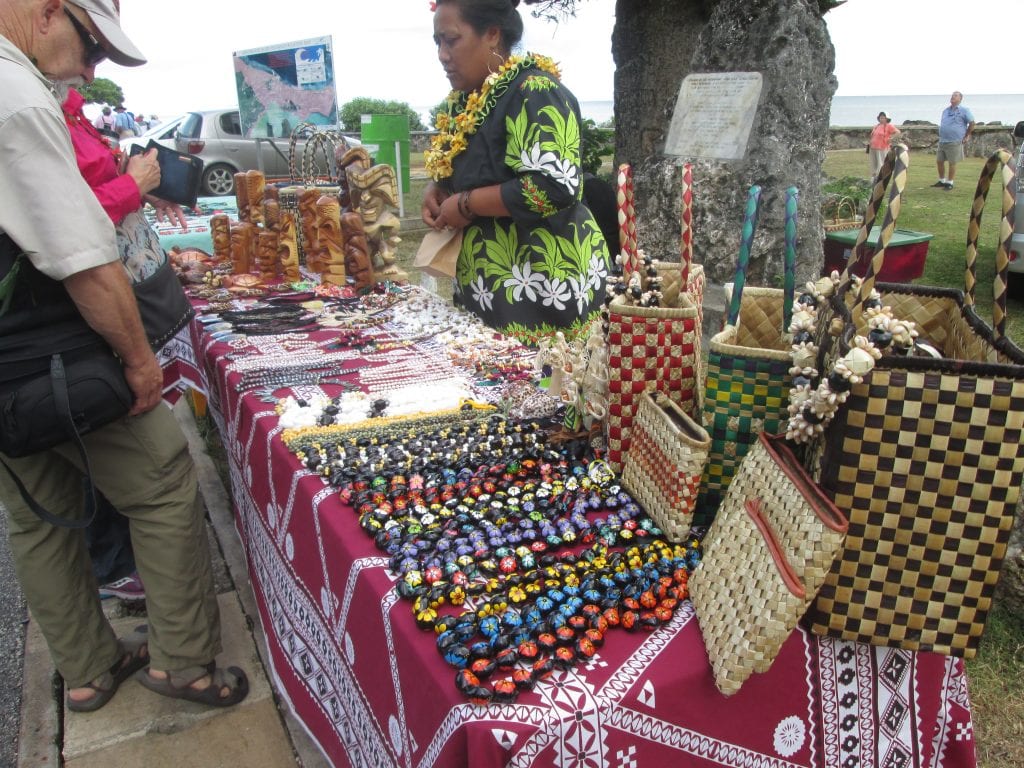
Explore the capital Nuku’alofa.
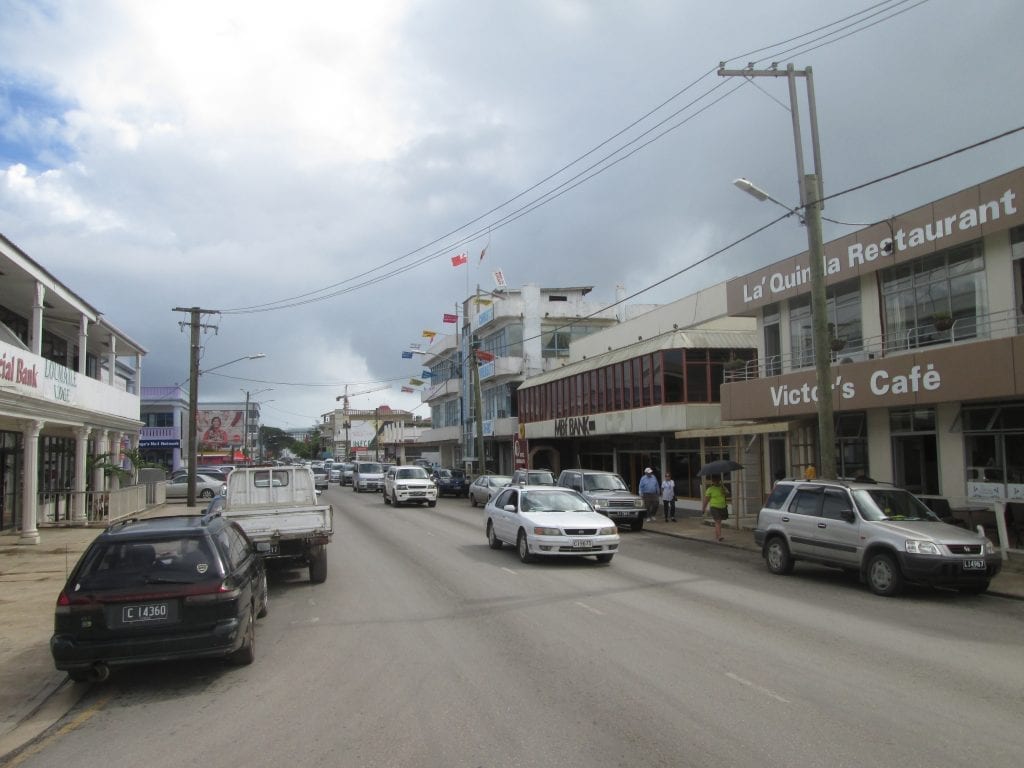
You can also:
Visit the Blowholes
Go Kiteboarding, surfing, diving, snorkeling, kayaking, swimming with the whales (June to November with the Humpbacks), sailing, fishing, birdwatching or take tours across the island and the country.
Explore further by visiting other islands within the Tongan group by boat or plane.
Culture
The great explorer Captain James Cook named Tonga the ‘Friendly Islands’ during his voyages in the South Pacific. Today, it is easy to see why he did this as I found the Tongan people to be extremely welcoming, friendly, and humble.
I learned that Tongan society is guided by 4 core values, which are;
- Fefaka’apa’apa’aki (mutual respect);
- Feveitokai’aki (sharing, cooperating, and fulfillment of mutual obligations);
- Lototoo (humility and generosity); and
- Tauhi vaha’a (loyalty and commitment).
Family is regarded as the central unit in Tongan life. Older people command the most respect and each member of a family knows their role. These values were certainly extremely evident, even from the perspective of a visitor that just came across so strongly. I found them to be a warm and caring people who really love and respect their Royal family.
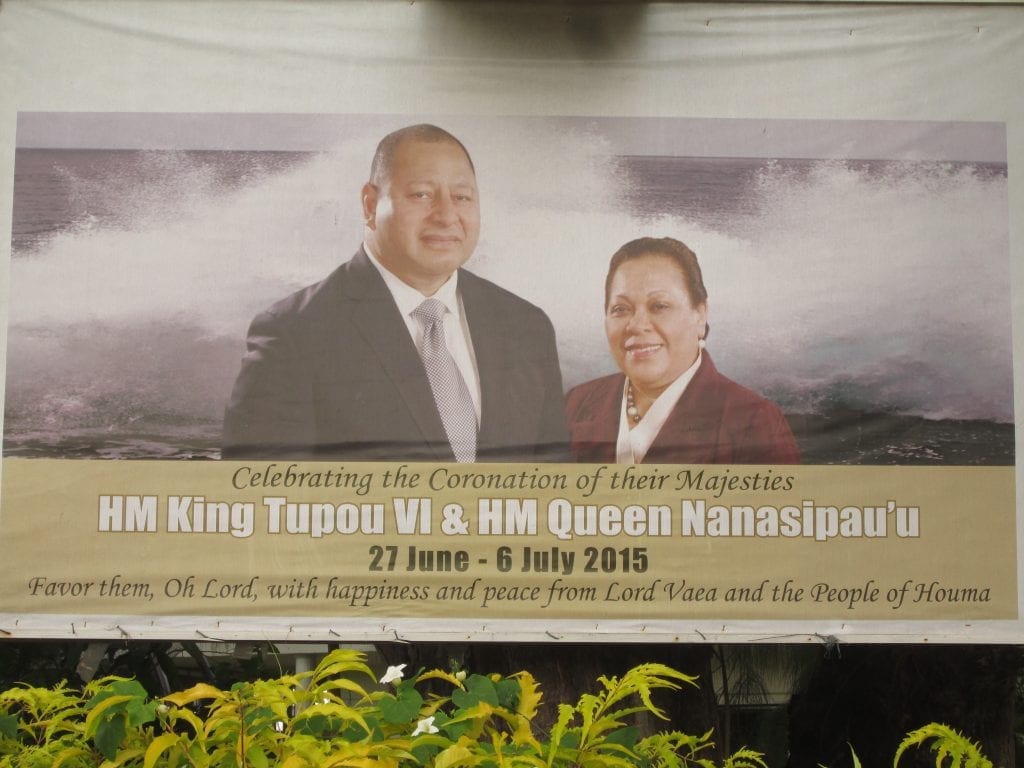
Tonga is also a nation entwined with Christianity. As the guidebook I was given states: ‘Sundays are devoted to church, family and rest. Beautiful clear harmonies, the ringing of church bells and the rhythmic beat of the Lali (wooden drums) are all familiar sounds drifting on the tropical breezes. From the days of the early missionaries until modern times, Christianity has been a vital and influential aspect of Tongan life, second only to the respect for family.’
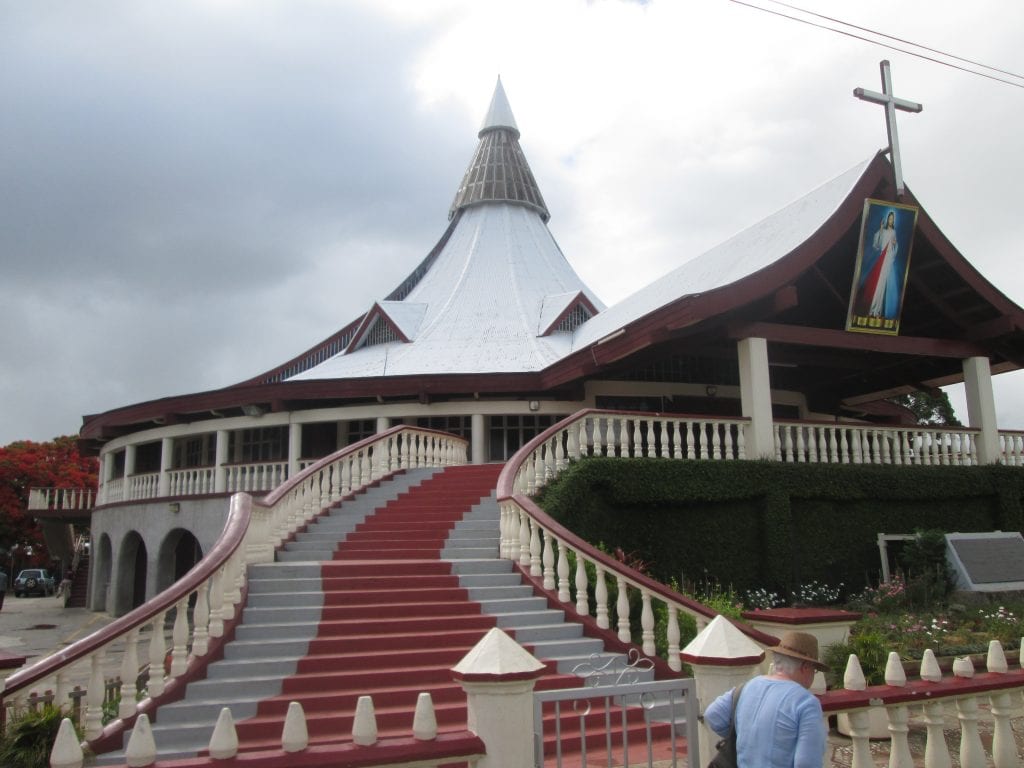
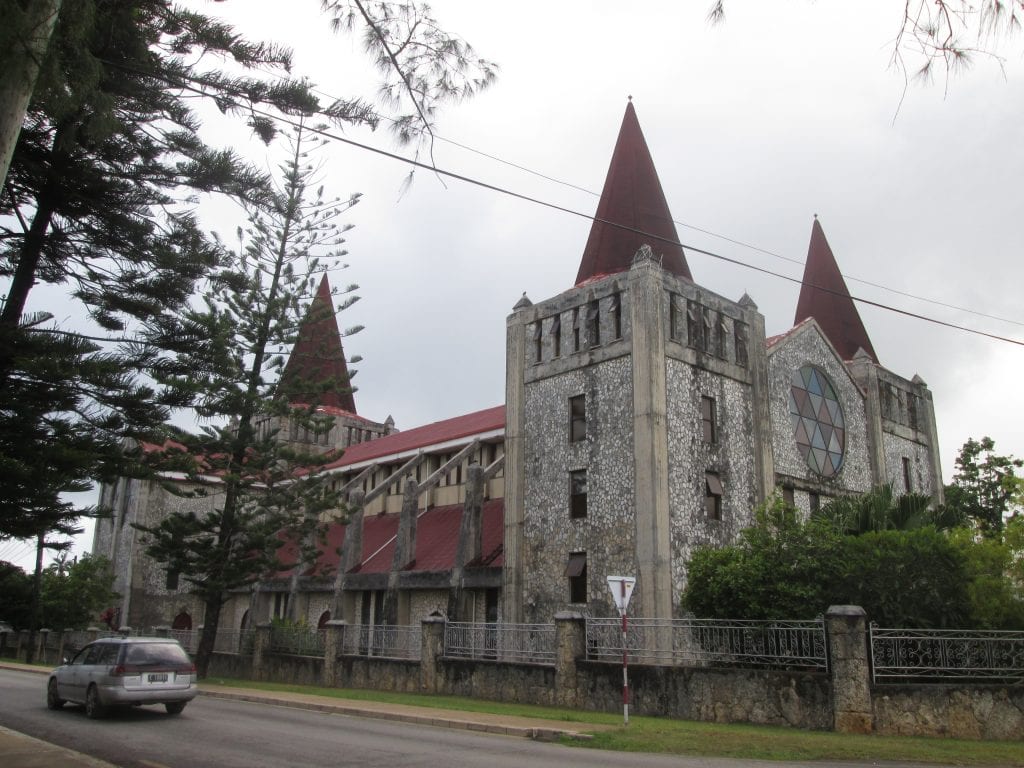
While my time in Tonga was relatively short, the people, the beautiful Tongatapu Island and its very interesting history made me so glad I visited.
This article on Tongatapu Island is part of the Natural Beauty Travel Series, authored by travel writer Nicole Anderson.
Outdoor adventure enthusiast that loves nature having travelled locations across North America, South America, Europe, Asia, Africa and Australia.
Passionate Travel Writer, Blogger and Influencer.



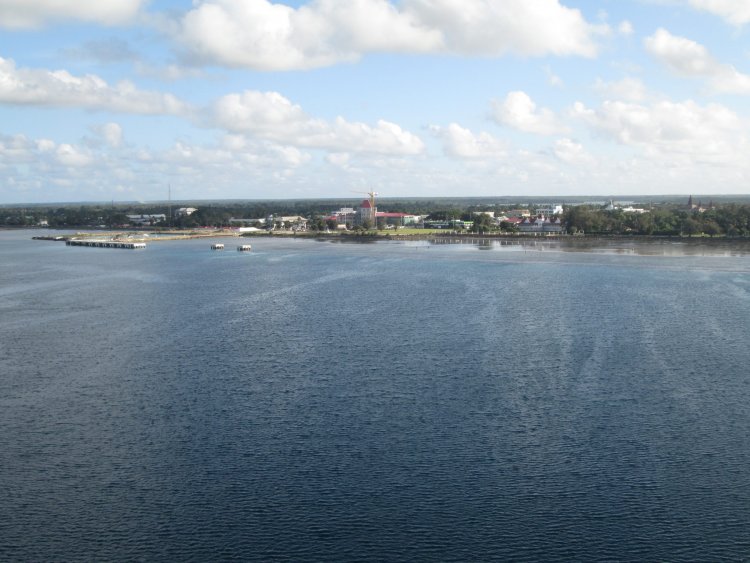










Leave a Reply